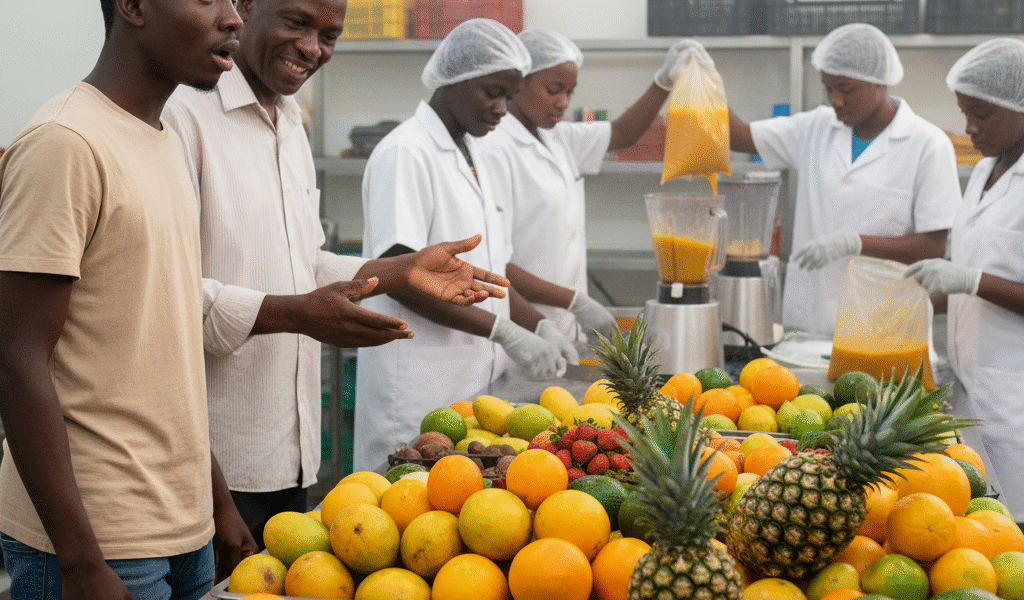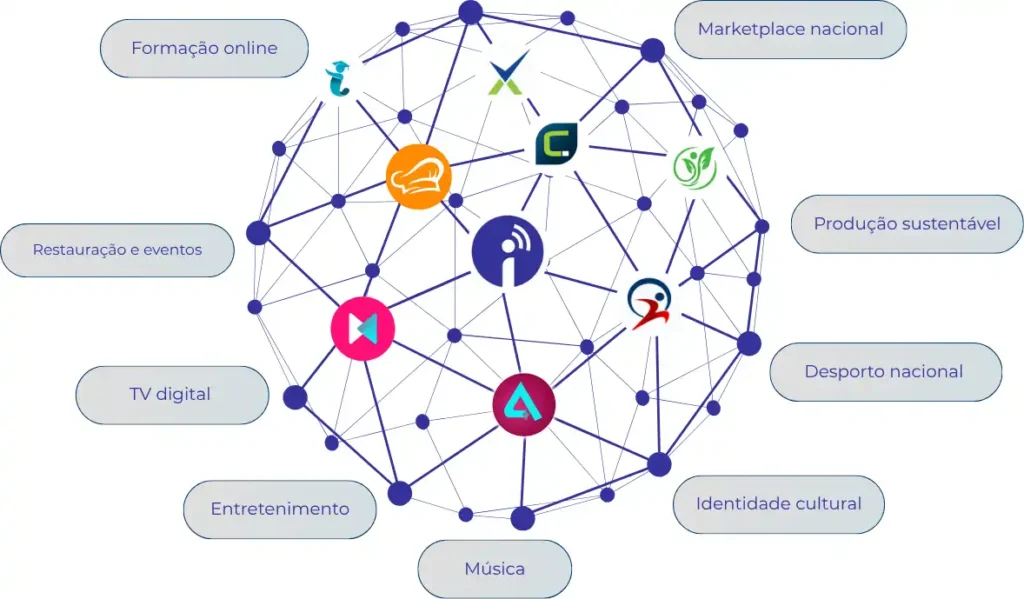
Chapter 27 – Fruit Pulp Processing
After touring the incubators and the feed, Mr. Ernesto led Salimo to an area where the air was sweet, filled with the scent of ripe fruit. Young men worked in gloves and caps, cutting, washing, and preparing mangoes, but also pineapples, avocados, oranges, tangerines, strawberries, watermelons, passion fruit, tamarinds, maçalas, and mafilwas. Fruits that in many markets across the country are lost to rot, were made the most of here.
The basins filled with colorful pieces, which were then ground into fresh pulp in machines. The PROSPERAR mentor explained:
— "Here we value what is often lost. How many times have you seen fruit spoil in backyards or at markets? Because every lost fruit is also a lost business."“
Salimo remembered the piles of wasted fruit he'd seen around town. There, he understood that entrepreneurship often meant avoiding waste and transforming abundance into income.
— "A young person can start small," Ernesto continued. "With a simple blender and proper hygiene, they can produce pulp, package it, and sell it in the neighborhood. Restaurants, bakeries, and even schools are looking for these products."“
For Salimo, it was like opening a new door: the fruits, previously seen as banal, turned out to be hidden gold.
You Can: What rots on the ground today may sustain your table and your future tomorrow.








